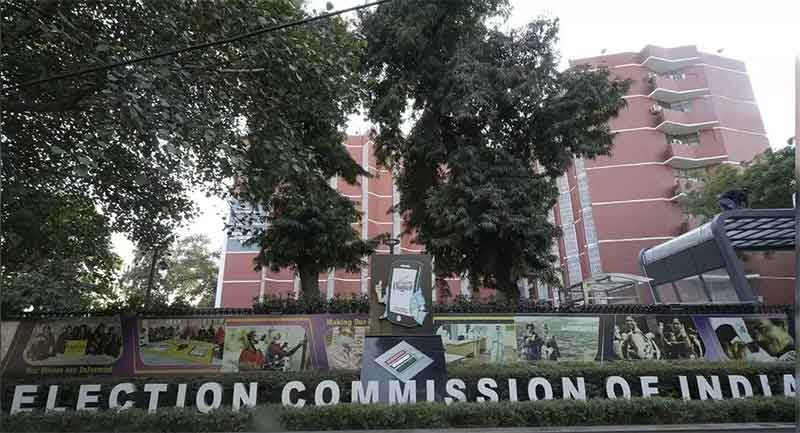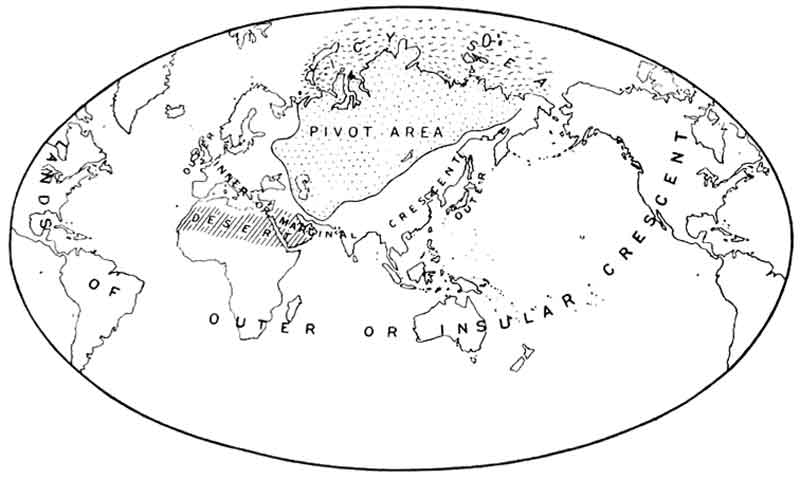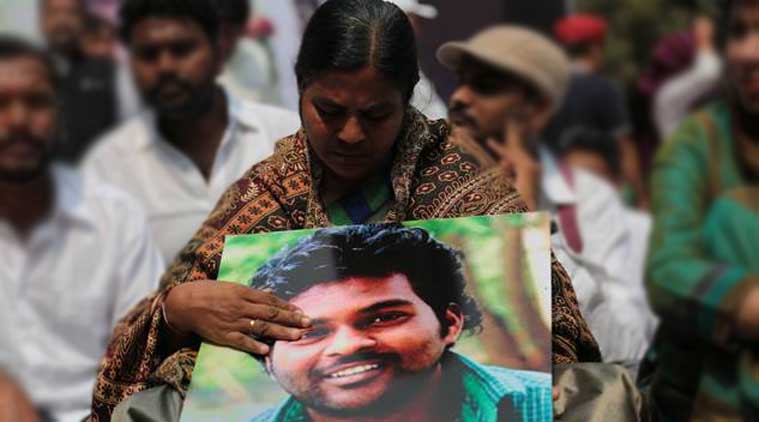
What happens when suddenly huge amounts of mud and debris start falling on people sleeping peacefully in a remote village, burying some of them entirely, while others watch helplessly as their near and dear ones are buried?
This is a tragedy that has befallen hundreds of people in recent landslides. The recent landslide in Irshalwadi village of Raigad district, about 65 km from Mumbai, led to the wiping out of almost the entire settlement as only a few houses out of the nearly 48 were spared.
The remote village is so difficult to approach that even well trained rescue teams had difficulty in reaching the area battered by heavy rains followed by a massive landslide. Taking heavy machines for removing debris and rescuing people was even more challenging.
When rescue work was finally called off after nearly four days of a high-risk operation, nearly 27 bodies had been recovered while at least 57 people were still missing (earlier reports mentioned about 80 missing). With hardly any likelihood of missing persons being found, these were regrettably widely feared to have perished also. Hence the death toll in a settlement of nearly 230 people is likely to be somewhere between 84 to 110. What a huge tragedy, which could have been avoided if people had been able, with government help, to shift to safer locations, or if appropriate steps to protect the crumbling hills and prevent the possibility of a landslide had been taken in time.
Moreover, this was not the only such tragedy in this wider region. In two other such tragedies in recent years in Western Ghats regions of Maharashtra state, in Raigad and Pune districts, about 80 to 110 deaths were reported.
There is a costly lesson that should be learnt at least after such huge tragedies. Many landslides are being caused by man-made factors, and adequate caution can help in avoiding the possibility of several such tragedies.
This year there has been a spate of huge landslides all over the Himalayan region much above the normal occurrence and in many of these cases carelessness relating to indiscriminate construction activities or mining were involved.
Last year (2022) in a landslide in Manipur nearly 47 bodies were recovered but several persons still remained missing. Another such tragedy at Amarnath pilgrimage in Kashmir claimed 16 lives while several persons went missing as flash floods were aggravated by rockfalls.
In year 2021 in mid-August a landslide in Nigulsari area of Kinnaur ( Himachal Pradesh) had resulted in 28 deaths and at least 14 injuries. The last week of July 2021 was particularly worrying as within the span of a few days in Maharashtra, Western Ghats and Himalayan region landslides claimed over a 100 human lives.
For neighboring countries the year 2017 turned out to be the most destructive from the point of view of landslides as nearly 152 persons perished in mid-June in the three hilly districts of Chittagong, Rangmati and Bandarban in Bangladesh, while in the previous month nearly 100 persons perished in Sri Lanka in landslides and mudslides.
Smaller landslides can also lead to loss of housing or habitation becoming very dangerous for one or more families and when all of these smaller tragedies are added up then the harm caused by them can be very serious. About 12% of the total land area being hilly is exposed to the threat of landslides in India. However when landslides add to the threat of flash floods, then their destructive impacts can travel much further to the plains below the hills. Landslides also increase the possibility of road accidents in several hilly areas.
There is increasing realization that the total number of landslides is very high and increasing at a fast pace in many hilly areas. According to the Durham Fatal Landslide Database the actual number of landslide related fatalities at world level during 2004-10 was actually roughly five to ten times of the estimates mentioned earlier. The previous estimates for this period ranged between 3000 and 7000 while the new estimate given by this database is 32300.
Prof. Dave Petley, who led the efforts to prepare the Durham Fatal Landslide Database at the International Landslide Centre in Durham University, included several research papers and reports from aid agencies and their partner voluntary organization working in remote areas, along with government data to prepare a wider database. Clearly estimates based on government data alone underestimated the fatalities to a very considerable extent.
Two important facts have been emerging from several recent landslide disasters which are related to each other. One aspect is that several disasters have been reported from sites of heavy construction activity. The Manipur disaster was reported from an area where a railway project was being constructed and neglect of safety precautions had been reported. More landslides have been reported from highway construction and dam construction areas where blasting takes places despite advisory against blasting at several places.
The second and related aspect is that workers employed in construction projects in hilly areas are more exposed to landslides, particularly migrant workers from plains who are not used to living and working in landslide zones. In a recent such tragedy in Ramban area in Jammu-Srinagar highway in 2022 about 10 workers died while in one of the biggest such tragedies at Tehri Project site in August 2004 in Uttarakhand, a very large number of workers had died. While officially only the death of 29 workers was mentioned, the number of migrant workers who perished is likely to have been much higher as nearly 110 workers were present at the tunnel site where the slide occurred and a large number of them could not be traced for several days.
Hence there is need to be much more considerate regarding improving safety conditions in all big construction projects in hilly areas, particularly the Himalayan region. There are reasons to believe that safety conditions often leave much to be desired. In the case of the Tehri project site of landslide, the micro-silica treatment had not yet taken place and Dr. P.C.Navani, a senior geologist had commented then that work in the unlined area should have been avoided at all costs in the rainy season.
Indiscriminate deforestation and tree-cutting as well as excessive mining and quarrying in fragile zones are other factors responsible for the rise in landslides. In terms of habitations, poor people who cannot afford houses in more secure areas sometimes agree to settle in the more risky, slide-prone areas, increasing their vulnerability to disaster.
Other people are driven more by greed than need, and there are several examples of rich persons indulging in over-construction, adding more burden on fragile hills. This is often true of hotel construction in hill stations, but sometimes even government agencies are at fault in terms of their own buildings. Hence land-use in hills has to be even more carefully regulated than in plains.
Due to all these factors some landslide zones are becoming more active while several new ones are being added. At the same time the number of people likely to be present in several more exposed and vulnerable areas has increased.
On the plus side the technology of protective works has certainly progressed, helped by a lot of useful research. As a result some impressive protection can be seen at some locations, but more often than not protection work fails to get adequate support and funding and the protection walls and other works that are often constructed do not come up to the required standards.
Another important aspect relates to identifying those habitations which have become too unsafe due to the high possibility of destructive landslides and which need to be shifted to a new place. Such rehabilitation should be done at the right time without much delay so that loss of precious human life can be avoided. On the other hand where there is still good chance of saving the habitation by taking up adequate protection works then this option should be preferred, again on the basis of urgency, although even in such a situation shifting for a few days may be necessary.
Some time back this writer visited one habitation endangered by landslides in a village located on a side of NH-5, in the route from Parwanoo to Dhrampur in Himachal Pradesh. In this village Mangoti Nande Ke Thara cracks had appeared in houses as a result of indiscriminate construction practices used at the time of widening the highway. The villagers said that at the time of rains they cannot sleep because of the threat of landslides and house collapse. They said that they had received compensation for land acquired for road widening but none for the damage to houses caused later. They said that they need to be shifted to some other place for the sake of their safety. They added that several other families living close to the NH in other settlements in and around Sanawra, Hardinge Colony, Kumarhatti and some other places faced similar grim prospects and difficult choices.
In the case of the people of Irshalwadi, or the section that remains of them, the Chief Minister of Maharashtra has promised resettlement at a safer place, but the past experience has been generally that the promises made at the time of disasters are not always fulfilled in the right spirit. A much better and sympathetic response is needed for people who have already suffered such heavy losses and even lost near and dear ones. Governments are generally also very reluctant to admit the link of hazardous construction or mining work with landslides, so that the affected people are denied compensation relating to this, leaving them to suffer the damages on their own.
In the cases of the huge tragedy of Joshimath of a very large number of houses developing cracks and becoming highly unsafe for living, despite a lot of attention being drawn to the tragedy and its close links to indiscriminate construction activities carried out in highly fragile areas very thoughtlessly, satisfactory solutions for affected people have not emerged yet.
Recently in Chirgaon area near Shimla, houses of many families in Janglik and Thaitwadi villages became so endangered by landslides that they had to be shifted and housed temporarily in community places or elsewhere. While moving them to safer conditions was a good step on the part of the administration, reports on their plight conveyed a sense of despair as there was no assurance of longer-term relief and safe housing.
Landslides need a multi-sided, protective and advance response, and merely reacting to serious situations is certainly not adequate. Hill-people understand well the seriousness of this increasing risk and if a comprehensive program is taken up with their participation to reduce the risk and harm from landslides, then good protective results can be achieved.
Bharat Dogra is a journalist and author, is Honorary Convener, Campaign to Save Earth Now. His recent books include Planet in Peril, When the Two Streams Met, Hindi Cinema and Society and Man over Machine.











































